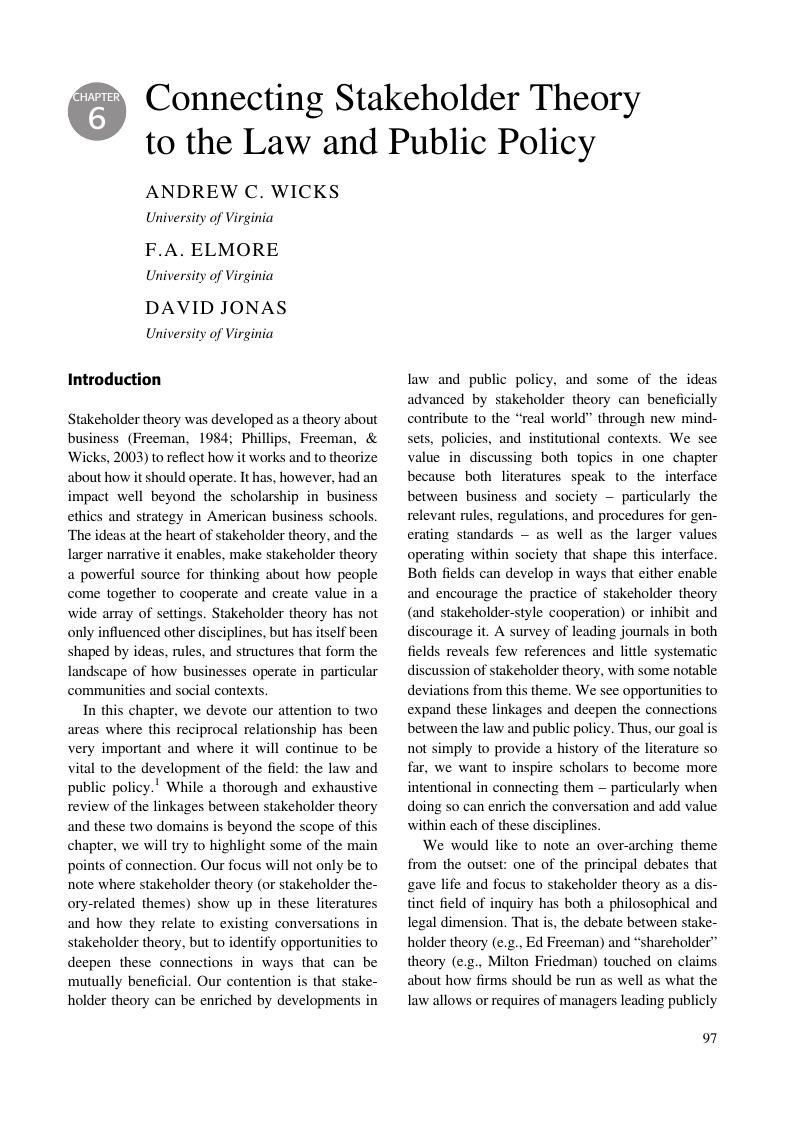Book contents
- The Cambridge Handbook of Stakeholder Theory
- The Cambridge Handbook of Stakeholder Theory
- Copyright page
- Contents
- Contributors
- Chapter Summaries
- Part I Theoretical Foundations of Stakeholder Theory
- Part II Stakeholder Theory and Society
- Chapter 5 Sustainable Wealth Creation
- Chapter 6 Connecting Stakeholder Theory to the Law and Public Policy
- Chapter 7 Shareholder Primacy vs. Stakeholder Theory
- Chapter 8 Business, the Natural Environment, and Sustainability
- Part III Stakeholder Theory in the Business Disciplines
- Part IV Stakeholder Theory in Education and Practice
- Part V New Voices in Stakeholder Thinking
- Index
- References
Chapter 6 - Connecting Stakeholder Theory to the Law and Public Policy
from Part II - Stakeholder Theory and Society
Published online by Cambridge University Press: 01 May 2019
- The Cambridge Handbook of Stakeholder Theory
- The Cambridge Handbook of Stakeholder Theory
- Copyright page
- Contents
- Contributors
- Chapter Summaries
- Part I Theoretical Foundations of Stakeholder Theory
- Part II Stakeholder Theory and Society
- Chapter 5 Sustainable Wealth Creation
- Chapter 6 Connecting Stakeholder Theory to the Law and Public Policy
- Chapter 7 Shareholder Primacy vs. Stakeholder Theory
- Chapter 8 Business, the Natural Environment, and Sustainability
- Part III Stakeholder Theory in the Business Disciplines
- Part IV Stakeholder Theory in Education and Practice
- Part V New Voices in Stakeholder Thinking
- Index
- References
Summary

- Type
- Chapter
- Information
- The Cambridge Handbook of Stakeholder Theory , pp. 97 - 116Publisher: Cambridge University PressPrint publication year: 2019
References
- 5
- Cited by



